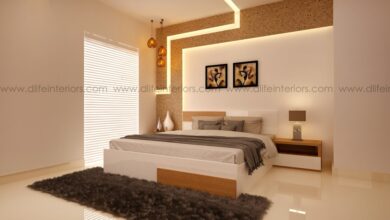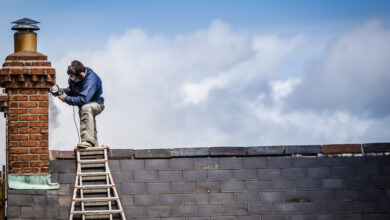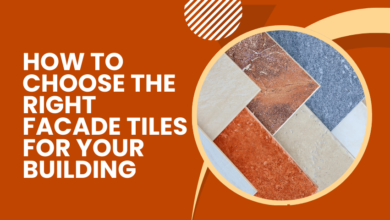Strength and Style: The Benefits of Steel Frame Homes

Steel-framed houses present a contemporary alternative to traditional timber frames, utilising metal beams and columns for structural support instead of wood. This construction method offers numerous advantages, including durability, resistance to insects and fire, and superior strength. Unlike wooden frames, steel frames allow for highly customizable architectural designs and precision in construction. Additionally, steel frames can be concealed with various materials such as brick, concrete, and wood, creating a classic appearance while benefiting from the strength and reliability of steel construction.
Steel frame homes feature a primary structural system made from metal rather than wood or other materials. The steel beams and columns in these homes provide stability and support to the entire structure. Utilising steel offers numerous benefits, including durability, fire and insect resistance, design flexibility, and environmental sustainability. Steel structures can be constructed to accommodate various building styles and can be integrated with a wide range of materials such as brick, concrete, and wood. As a result, steel houses present a reliable, modern, and versatile option for potential home builders.
Advantages of Steel frame Houses Over Traditional Wooden Homes
- Fire and Weather Resistance: Steel is naturally resistant to fire and can withstand extreme weather events such as hurricanes, earthquakes and heavy snow far better than wood, and thus occupants is more secure
- Durable Steel: Steel is extremely durable and does not rot, warp or crack like wood, so it lasts longer without requiring regular maintenance or repair
- Sustainability: Steel is a recyclable material, making steel buildings environmentally friendly. In addition, steelmaking is generally less wasteful than conventional methods and significantly reduces the environmental impact.
- Flexibility: Steel offers excellent design flexibility, allowing architects and homeowners to create unique and innovative designs. Its strengths enable the creation of large open spaces and high-quality floor plans that meet the essentials of modern living.
- Reducing Site Changes: Although steel frames offer advantages in terms of structural strength and durability, they can limit site changes compared to conventional materials , and requires careful planning and precise construction techniques
- Thermal Conductivity: Steel conducts heat faster than wood, and can increase energy consumption in heating and cooling. However, other energy-efficient preventive measures can overcome this drawback.
- Noise Transmission: Metal buildings can transmit more noise than wood, increasing sound transmission between buildings. However, proper insulation and soundproofing can mitigate this issue, creating a comfortable environment.
Overall, steel products offer high strength, safety, and durability and construction flexibility, making them an attractive choice for modern homes.
Throughout records, metal has made tremendous strides in engineering and has emerged as one of the main materials used in present day construction. In the early 20th century, scientists and engineers advanced new steel alloys with better energy and corrosion resistance, revolutionising their usefulness in the production enterprise these days with new techniques together with rolling, the use of are metal pipes, and The Steel warmness treatment in a single so of many regions available nowadays as substances.
Things to Consider:
- Higher Initial Cost: Steel frames can have higher upfront costs compared to wood frames.
- Building a Heat Bridge: Steel conducts heat faster than wood. Careful planning and insulation techniques are essential to ensure energy efficiency.
Recognition of Steel’s Advantages in Construction: A Closer Look at Its Many Benefits”
- Cost-Effective
One of the most significant benefits of steel is its lower cost compared to wood. While wood is a renewable resource, its production is time-consuming, unlike steel, which is easy to fabricate and recycle sustainably. Additionally, wood production generates waste and requires extensive transportation, leading to inefficiencies and increased costs. Steel, on the other hand, facilitates more efficient construction processes, reducing both time and expenses.
- Durable
Steel’s inherent resilience allows it to withstand high forces without deteriorating, making steel-framed houses particularly robust in the face of earthquakes, high winds, and other impactful events. Whether encountering natural disasters, tree falls, or vehicle accidents, steel structures maintain their integrity, further enhancing their durability and longevity.
- Sustainable
Steel is renowned for its sustainability. After use, steel parts can be treated in sorting facilities, dried, and refined into new metals. Advances in steel furnace technology have improved energy efficiency, reduced energy consumption, and lowered carbon emissions, making steel an environmentally friendly construction material.
- Fire and Weather Resistance
Steel construction is highly resistant to corrosion, sparks, and fire. Its natural moisture resistance prevents rust, rot, and decay, making it an ideal material for homes in various climates. This resistance to moisture also makes steel structures mould-resistant, contributing to healthier living environments.
It Can Be Customised:
Steel frame homes offer exceptional customization. Operators can cut and shape steel frames to meet specific requirements using advanced computer-aided technology. These poles are also flexible, making them easy to stretch. Furthermore, steel frames provide a great architectural variation in architectural aesthetics by incorporating various building materials such as brick, cement and wood
- Thermal Conductivity: Steel conducts warmth extra conveniently than wood that could lead to better power costs for heating and cooling. However, this downside may be mitigated via using insulation and different strength-efficient building techniques.
- Noise Transmission: Steel framing may transmit more noise than wood, doubtlessly main to increased sound switch among rooms. However, proper insulation and soundproofing substances can limit this difficulty, making sure comfortable living surroundings.
Overall, steel framing offers a compelling mixture of durability, protection, sustainability, and layout flexibility, making it an appealing option for cutting-edge home construction.
Challenges in steel frame working:
Despite this advantage, metallurgy has drawbacks to consider:
- Children with Disabilities:
The high thermal conductivity of steel allows for faster heat transfer, making homes more energy efficient. But additional insulation, such as fibreglass insulation, can reduce this problem and improve indoor temperature.
- Rust:
Although modern metal is corrosion resistant due to protecting coatings, these substances can corrode over the years, growing the risk of corrosion. Improper set up, such as in a leak-susceptible location, also can cause water damage. However, precise metals consisting of galvanised metal and stainless steel have inherent corrosion resistance that reduces such hazard. Regular renovation of the protecting coating similarly reduces the chances of damage.
- Reduced Internet site Modifications:
Although prefabricated metallic offers high-quality overall performance, on-website length and shape changes may be hard and luxurious. Effective conversation and coordination between layout, production, and production teams can lessen mistakes within the construction procedure and overcome those demanding situations.
IN end, metallic buildings offer a robust combination of sturdiness, durability and design flexibility that makes them ideal for modern construction initiatives Strength and flexibility provide protection from the environment environmental dangers consisting of hearth, weather and bodily effects as a regular building cloth.
Furthermore, the procedures of fabrication of custom steel frame homes permit for brand spanking new architectural designs and manufacturing processes. While metallurgy offers demanding situations together with warmness transfer and corrosion capability, those drawbacks may be mitigated through proper insulation, preservation and cloth choice.
Final Words:
Overall, Steel frame homes constitute a dependable and versatile answer for homeowners and developers searching out sustainable, power-efficient, and aesthetically appealing homes. As the manufacturing and manufacture of metal is booming, metallic structures have glaringly emerged as an integral part of the growing contemporary structure.



